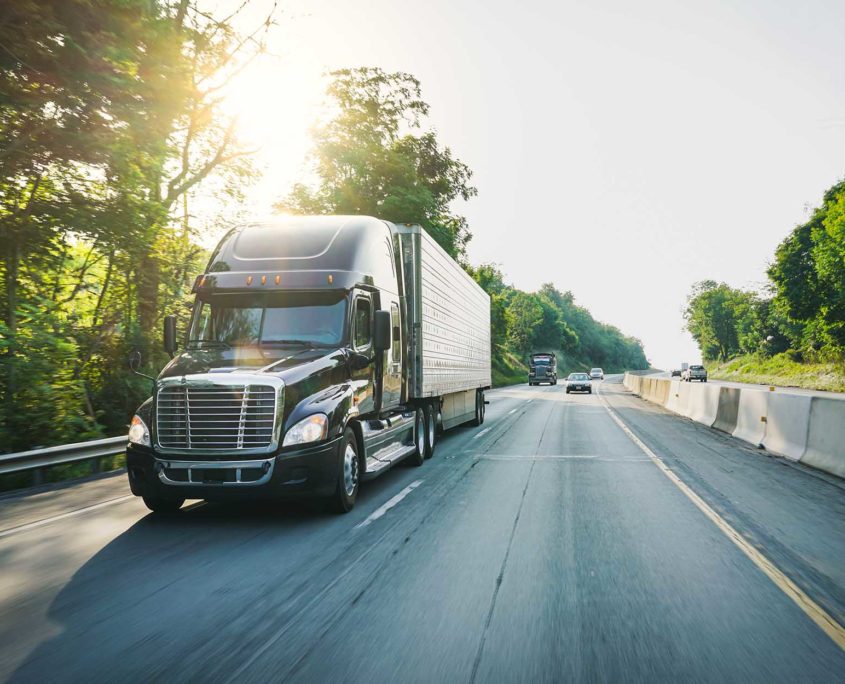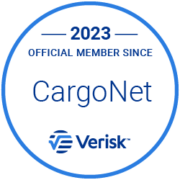Self-driving cars are all the rage these days, with everyone from Hyundai to General Motors getting in on the action. The technology represents big business, with Intel and Strategy Analytics reporting that the autonomous vehicles could add $7 trillion to the global economy by 2050.
We’re still a few decades out from that vision, but autonomous vehicles have already started to infiltrate the shipping industry. Startups such as Embark are using autonomous trucks to ship refrigerators 650 miles between El Paso, Texas, and Palm Springs, California. The trucks are fully automated, though human passengers ride shotgun in case of an emergency. Tesla, meanwhile, is working with major companies such as Walmart to test fleets of autonomous trucks.
Despite these exciting steps forward, it will probably still be at least 10 years before fully autonomous vehicles are a widely used method of shipping freight on American roadways. Even with prototypes logging miles on the road today, it’s still a bit early to say exactly how the industry will change. The only certainty is that the logistics industry will never be the same again.
The Benefits of Autonomous Trucks
To examine the short- and long-term future of this technology, we must first differentiate between fully autonomous and semi-autonomous trucks. Semi-autonomous trucks, including the vehicles Embark and Tesla are using, require partial engagement from humans in the truck cabs. Fully autonomous trucks that would require no human operators whatsoever probably won’t be hitting the roads until there are dedicated lanes for trucks.
Even a slight degree of automation can create opportunities for cost savings in transportation. Platooning, one semi-autonomous technique, enables carriers to save up to 10 percent on diesel fuel costs. Trucks use advanced sensors surrounding the vehicle to stick together in close lines. This minimizes drag, reducing the work that the engines must perform. When one truck leaves the line or another vehicle disrupts the line, the other trucks in the platoon automatically adjust for the changes.
Automation has incredible potential in the shipping industry, but many business leaders naturally gravitate toward how it can boost their budgets. For instance, some Caterpillar mining trucks in Australia have helped save 500 hours of work annually by handling small shipments. Imagine the results if automated trucks were to handle the entirety of your freight needs.
The benefits of automation extend beyond just cost savings and efficiency, though. Autonomous vehicles obey safety protocols to the letter, and they can operate during the middle of the night, when the roads are relatively free of drivers. That means fewer tired truckers, faster shipments, and a likely reduction in accidents.
Some drivers understandably fear that these trucks will take their jobs, but autonomous trucking will redefine what it means to be a truck driver rather than replace the position entirely. New skills, like logistics management and repair specializations, will take priority both within the cab and outside of it. Human drivers will still be necessary to take trucks to their final destinations, refuel the vehicles, and load and unload shipments.
Major fleets might experiment with the technology sooner, but the high cost of early adoption means many owner-operators will be slower to switch over to fully autonomous trucks. Independent contractors will be able to sit back and assess the landscape as new regulations, safety protocols, and other factors take shape. Once the dust clears, experienced drivers will still have a seat at the table — though their responsibilities will change.
How Automation Will Forever Change Shipping
While it won’t happen tomorrow — or even next year — autonomous vehicles are going to spark a dramatic shift in logistics. The technology will set off major shockwaves in three key areas: driver employment, delivery times, and costs.
- Evolving Job Duties
The ongoing driver shortage will not disappear with autonomous vehicles. Companies still desperately need drivers, and that won’t change before the autonomous shift or during the transition period. The fewer drivers that are available, the longer and more difficult the transition process will be.President Donald Trump’s plan to allow some form of apprenticeship for new drivers could help, but technology will play a larger role than policy in this issue. Fully autonomous trucks won’t need drivers in the traditional sense, but they will need human logistics managers, maintenance professionals, and other skilled laborers to remain operational. The drivers of today will be able to gain new skills and embrace exciting opportunities. - Shortened Delivery Times
Robots don’t have to obey laws related to hours of service. Computers don’t need to sleep, eat, or live their personal lives off the clock. They will need a tuneup every now and then, but robots are able to stay on the road much longer than their human counterparts.Existing HOS laws exist to protect everyone from sleep-deprived truckers hauling loads to meet tight deadlines. Robots are able to adhere to incredibly rigid schedules, which are reduced thanks to the elimination of eight hours of sleep every day. With this increased efficiency, logistics managers will have a field day optimizing schedules. - Reduced Costs
Not paying drivers is cheaper than paying drivers, but the savings extend far beyond shippers and carriers. Provided that autonomous trucks are safer than humans, we can expect to see insurance costs drop over time. As these costs go down, shipping organizations will be able to pass on the savings to their clients — all the way to consumer products in stores.
At Sheer, we aggressively vet the carriers in our network and rate them based on their levels of service. When fully autonomous trucks become a reality, we will continue to measure carrier performance to track the effectiveness of autonomous trucks. Once autonomous vehicles prove their potential advantages, we’ll be ready to leverage the technology to benefit our services and our clients.
Interested in learning more about the evolution of shipping and logistics? Download our whitepaperto discover how your company can get ahead of technological advances in the shipping industry.



